Interactive Rocks |
| Click on a rock to learn more |
 |
| |
Igneous Rocks |
| |
 |
Granite - Granite is a light-colored igneous rock with grains large enough to be seen with the naked eye. It is the most common igneous rock found on Earth's surface. It is formed from the slow crystallization of magma beneath the surface. It is often used to make countertops, monuments, and floor tiles among other things. It can be gray, pink, white, red, or a combination of those colors. Mount Rushmore in South Dakota is made of granite. California's Yosemite Valley is also granite. |
| |
|
| |
Back to the Top |
| |
|
 |
Pumice - Pumice is a light-colored, porous rock formed from violent volcanic eruptions. When such an eruption occurs, large amounts of pumice are formed - some of which can be small pebbles, while others can be as large as houses. The pores in specimens of pumice are formed from gas bubbles trapped in the rock during the rapid cooling of magma. Pumice is used as an aggregate in concrete or landscaping and as an abrasive in other products. It is even used in soaps and toothpastes. |
| |
|
| |
Back to the Top |
| |
|
 |
Obsidian - Like pumice, obsidian forms from violent volcanic eruptions in which molten rocks cool so rapidly, the atoms are unable to arrange themselves into a crystalline structure. Obsidian is known as a volcanic glass that becomes solid once it rises above the surface of the Earth. Obsidian is usually black, but can be brown or even green. Sometimes two or more colors are swirled together such as black and brown. Historically, obsidian has been used to make blades for weapons and tools because of its extremely sharp edges. It was one of the first rocks to be mined. |
| |
|
| |
Back to the Top |
| |
|
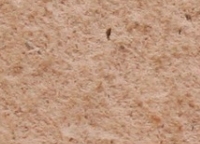 |
Rhyolite is an igneous rock that is usually pink or white and full of cavities called "vugs". Vugs form when gas gets trapped inside rapidly cooling magma. Rhyolite vugs sometimes contain gems such as topaz, agate, and opals. Because of its many vugs, rhyolite is not particularly useful in construction or manufacturing.
Rhyolite is produced from eruptions of granitic magma - huge eruptions that result in massive calderas such as the Yellowstone Caldera. Such eruptions are considered extremely rare and only occur a few time every century.
|
| |
|
| |
Back to the Top |
| |
|
 |
Basalt - Basalt is the world's most abundant bedrock and most widespread igneous rock. Bedrock can be defined as the hard layer of rock beneath soil or loose rocks. Basalt is a black rock that comprises about 90% of all volcanic rock. Most basalt is formed from erupting molten rock through cracks in the ocean floor. Basalt is also common on the moon and on Mars. |
| |
|
| |
Back to the Top |
| |
|
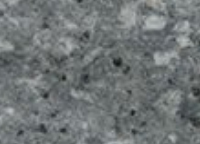 |
Andecite - Andecite is a family of igneous rocks that are usually grayish in color. Andecite is normally found in lava flows formed by stratovolcanoes. It is named for the Andes Mountains of South America, where it is common. |
| |
|
| |
Back to the Top |
| |
|
Sedimentary Rock |
 |
Limestone is a sedimentary rock made mostly of calcium carbonate - It is most often formed in clear, shallow, oceanic waters. It is made from skeletal fragments of tiny marine life and a build up of shell, coral, algae, and even waste debris. The Caribbean Sea, Gulf of Mexico, and Oceania are places where limestone commonly forms. Limestone has many uses. It is often used in construction materials, cement, and even as animal feed filler. |
| |
|
| |
Back to the Top |
| |
|
 |
Sandstone is a sedimentary rock made of sand-sized grains of mineral, rock, and organic matter. It is usually tan in color, but may also be reddish if it has iron oxide (rust). Between its grains are silt and clay-sized particles that bind everything together. Sandstone, in fact, has nothing to do with sand, rather, its name is derived from its sand-sized grains.
Sandstone is one of the world's most common sedimentary rocks. It is used for manufacturing purposes or for construction material. Oil and natural gas often reside in underground sandstone reservoirs. |
| |
|
| |
Back to the Top |
| |
|
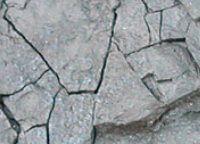 |
Shale - Shale is a kind of sedimentary rock formed when tiny mud particles are compacted. Shale is "laminated," which means it has many thin layers and easily splits along these layers. Shale can be red, green, brown, or gray, and is considered the world's most common sedimentary rock. Black shale is an important resource because it sometimes breaks down into natural gas or oil. Large corporations have developed methods for extracting the oil and gas from deposits of shale deep within the Earth. One such method is called fracking. |
| |
|
| |
Back to the Top |
| |
|
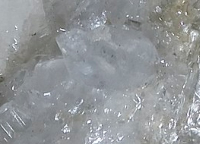 |
Dolomite - Dolomite is a sedimentary rock composed mostly from the mineral dolomite (calcium magnesium carbonate). Dolomite is very similar to limestone. They both have a similar color spectrum of white to light gray or light-brown and share roughly the same level of hardness, though dolomite is slightly harder. Furthermore, they are both used in construction materials and building stones. The main difference between dolomite and limestone is their structures. Dolomite is made of calcium magnesium carbonate and limestone is a calcium carbonate mineral. |
| |
|
| |
Back to the Top |
| |
|
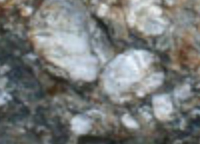 |
Conglomerate - Conglomerate is a sedimentary rock that contains large clasts that are bound together by a mixture of sand, mud and mineral cement. A clast is a rock fragment. The clasts within conglomerate can be igneous, sedimentary, or metamorphic. Gneiss, sandstone, limestone, basalt and quartzite are particularly common as clasts. Because it breaks apart so easily, conglomerate has few commercial uses. |
| |
|
| |
Back to the Top |
| |
|
 |
Travertine is a form of limestone that is deposited by hot springs. It is whitish, tan, or rusty in color. Travertine formations are most common in Italy, but are also found in Mexico, Turkey, Iran, and in some parts of the United States such as Yellowstone National Park. It forms from the fast precipitation of calcium carbonate, often in hot springs or in limestone caves - where it can form stalactites and stalagmites. Travertine has been used for thousands of years as a building material. Many ancient ruins, including the Colosseum, are made mostly from travertine. |
| |
|
| |
Back to the Top |
| |
|
Metamorphic Rock |
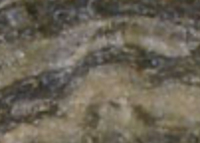 |
Gneiss is a metamorphic rock with black and white bands composed of feldspar and quartz. Like many metamorphic rocks, gneiss forms at convergent plate boundaries where grains recrystallize under extreme heat and pressure. Gneiss often originates from shale, which transforms to slate, phyllite, schist, and finally into gneiss. Gneiss is a versatile rock that is used in construction, landscaping, road building, and even in floor tiles, countertops, and as cemetery stones. |
| |
|
| |
Back to the Top |
| |
|
 |
Marble is formed from limestone that is exposed to extreme heat and pressure at convergent plate boundaries. It is made mostly of calcite (calcium carbonate) but has other minerals such as quartz, pyrite, and graphite. Marble usually occurs in large deposits which are heavily mined. It is used extensively in road construction, railroad beds, building foundations, and in buildings, monuments, and sculptures. It is also used in flooring and for countertops. Because it is made of calcium carbonite, marble powder is effective in neutralizing acids and is the main ingredient of Tums and Alka-Seltzer. |
| |
|
| |
Back to the Top |
| |
|
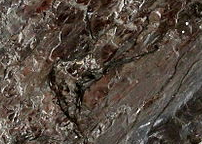 |
Coal is a sedimentary rock that forms from plant material in swampy environments. Coal, natural gas, and iron are the three most important fossil fuels. Coal is burned to generate electricity among other things. Anthracite is a shiny black rock that is the highest rank of coal. This means it has a high carbon content and contains more energy than other kinds of coal. It is also more environmentally-friendly when burned. Only one percent of all coal is anthracite. Unlike most coal, anthracite is a metamorphic rock. |
| |
|
| |
Back to the Top |
| |
|
 |
Slate is a metamorphic rock formed when mudstone or shale is altered during metamorphism. Slate usually comes in various forms of grays and is used extensively in roofing and flooring. Slate was commonly used as writing platforms (along with chalk) for students in classrooms. |
| |
|
| |
Back to the Top |
| |
|
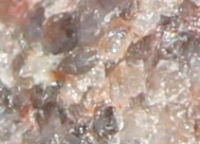 |
Quartzite is a metamorphic rock that is made up almost entirely of quartz. Quartzite forms when sandstone, rich with quartz, is altered by heat, pressure, and chemical activity of metamorphism. This usually occurs at convergent plate boundaries during mountain formation. In fact, quartzite is found in mountain ranges throughout the world. It is so strong that it is impervious to the effects of erosion and is often found at the peaks of mountains. Quartzite is usually white, gray, or pink in color. Because it is so strong and hard, it is used for large cutting tools such as axes and scrapers. |
| |
|
| |
Back to the Top |
| |
|
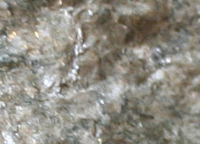 |
Schist is a metamorphic rock with large grains that can be seen with the naked eye. Schist is typically foliated. This means that the individual mineral grains split off easily into flakes or slabs. Schist is formed at convergent plate boundaries at moderate heat and pressure from the metamorphism of shale to slate to phyllite to schist. Schist itself can be metamorphosed further into gneiss. Schist is often a host rock for precious gems such as emeralds and sapphires. |
| |
|
| |
Back to the Top |
| |
|
|
| |
|
